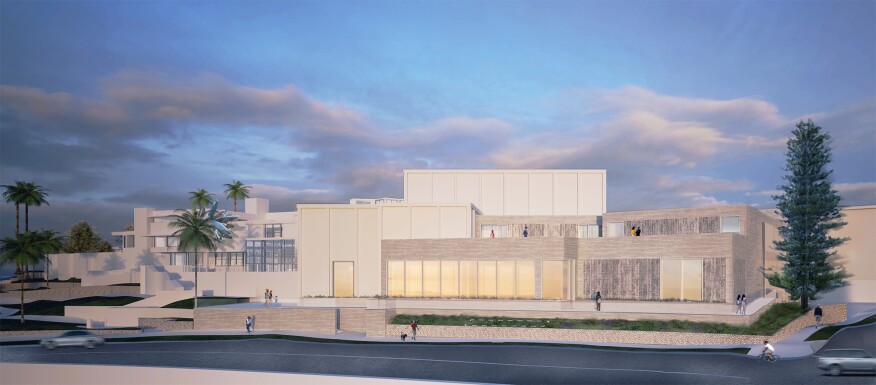
No, Mimi Zeiger, you might be among our most acute critics, but just because something was designed by a good and important architect does not mean we automatically need to save it. Good architects experiment and take risks. Sometimes they fail. Architects also get stuck in a rut and churn out mediocre versions of better designs they have already done. There is no reason to save their less-than-stellar buildings, especially if doing so would hinder the operations of the institutions they serve.
Such is certainly the case with the Museum of Contemporary Art San Diego (MCASD), which wants to gut its misconceived Venturi, Scott Brown and Associates (VSBA) addition so that it can add more space that actually works. The predictable hue and cry has arisen, with advocates asking us to preserve a building that has a somewhat confused organization, banal spaces, and ridiculous ornamentation. It would be much better if we were to concentrate our energies on a VSBA building that actually deserves saving, like the Abrams house in Pittsburgh. While that building has its own organizational, image, and perhaps structural issues, the value of the house’s way of rethinking how a home should look and work makes it an important building to preserve.


Truth be told, VSBA faced a difficult task in La Jolla, and I am not sure that anybody could have made a good addition to the museum’s mess of boxes clinging to that cliff at the continent’s edge. Though the original 1913 Scripps house that the museum had used since 1941 was designed by Irving Gill, that original structure was already difficult to find amongst all the accretions and changes that had been made before VSBA was commissioned to design the new entry, lobby, and galleries in 1993—and which was completed in 1996. What the original and its pre-VSBA additions lacked in logic and usable space, however, it made up for with charm and views. As it rambled around its corner of downtown and across whatever space it could find before it hit the road below, the museum afforded views of the Pacific that artists such as Robert Irwin used to their advantage with site-specific installations. A walk to find a specific work of art or exhibition, on the other hand, was as more of a voyage of discovery than a regular march through galleries.
Some artists, like Robert Irwin, used the museum's views to the Pacific strategically in their installations.
VSBA enlarged the entry and gave the museum some usable, though featureless and lightless, new galleries. It made a little more sense of the circulation, though not much. The firm also added some signature touches, including a pergola in front (which always struck me as obese) and the lobby’s warped star-shaped ceiling made of fins adorned with neon strips whose logic—whether aesthetic, functional, or structural—is still a mystery to me. For some reason, the new expansion, by Selldorf Architects in New York, saves this element.
Selldorf’s plan is one more step towards maximizing the site and making the whole complex more rational, although you do have to wonder when the museum will just give up and either raze what is there and start over, or realize the limitation of where they have always been and strike out into new territory.
Selldorf’s new addition, however, is already underway, so now there is a rearguard action to save the few elements of the VSBA design that would disappear in the current plan. Zeiger argues that the building is “too young” to raze, because we do not have enough distance to decide whether our current negative judgement—which she admits to sharing—will stand up. She brings up the on-again-off-again plans for the J. Edgar Hoover Building in Washington, D.C., another ugly, no longer functional, and just bad building that is currently under threat. But this only strengthens my conviction that not everything old is worth saving. In the case of the Hoover Building, it has three things going for it: It is vast, and tearing down would mean a tremendous waste of resources; any replacement would be insanely expensive; and Donald Trump hates the building. Its design, by the Chicago firm C.F. Murphy Associates, is not something that speaks to those factors.


We can and must pick and choose. Some buildings are just bad, by any set of criteria you might use, no matter what style or how old they might be, or who might have designed them. Defending them because “it represents a key part of the duo’s oeuvre … because it is by Venturi Scott Brown,” as the otherwise highly perceptive and critical Zeiger claims, only weakens the case for good architecture. If there are doubts about a building’s merits when it is under threat, such as is the case with Philip Johnson’s AT&T Building, which just received landmark designation, we should err in favor of preservation. But in the case of a building like this, designed in a reactionary, already outdated mode, we should just let it go.
















